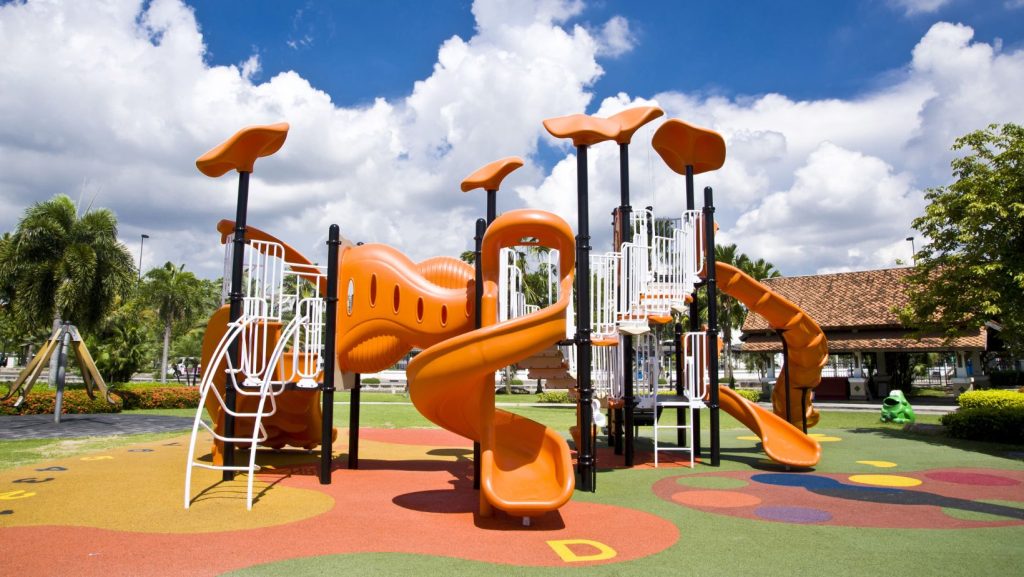
Ensuring playground safety is a responsibility that every community must take seriously. Children flock to playgrounds for fun and exercise, but the presence of hazards can lead to serious injuries. Understanding how often playgrounds need inspections and what these inspections should entail is essential for creating safer play areas. This blog post will cover the frequency and types of playground inspections and practical tips for maintaining playground equipment.
Playground Safety and the Importance of Inspections
Playgrounds are places where children can engage in physical activities, socialize, and have fun. However, without proper maintenance and regular inspections, these spaces can pose significant risks. The primary goal of playground inspections is to identify and mitigate hazards before they result in accidents or injuries. Regular inspections help maintain the integrity of the equipment, ensure compliance with safety standards, and provide a secure environment for children to play.
Playground Inspection Frequency
We categorize playground inspections into three types based on frequency: daily, monthly, and annual.
Daily Visual Inspections
One of the first lines of defence against playground hazards is the daily visual inspection conducted by caregivers or staff. These quick checks focus on spotting obvious issues such as litter, vandalism, and visible damage to equipment. Daily inspections should include:
- Litter Removal and Vandalism Checks: Removing trash and repairing vandalized equipment helps maintain a clean and safe environment.
- Surface Inspection: Make sure the surface under and around playground equipment is free of debris, holes, or tripping hazards.
- Structural Checks: Looking for signs of wear and tear, such as loose bolts or rusty equipment.
Daily inspections are crucial for addressing minor issues before they escalate into major problems.
Monthly Documented Inspections
In addition to daily visual checks, more detailed monthly inspections should be carried out. These inspections go beyond the surface to assess the functionality and safety of various playground components. Key areas to inspect include:
- Playground Equipment Inspection: Checking each piece of equipment for damage, stability, and wear and tear. Examine all moving parts, joints, and connections to ensure proper functionality and safety.
- Clearances and Entrapment Hazards: Verify that there are no gaps or spaces where children could get stuck.
- Detailed Documentation: Keep records of all findings, noting any necessary repairs and actions taken. This documentation is essential for tracking maintenance and ensuring accountability.
Monthly inspections help ensure that all playground equipment remains in good working order and continues to meet safety standards.
Annual Comprehensive Inspections
Annual inspections are the most thorough and should be conducted by certified playground safety inspectors. These professionals are trained to perform a deep examination of both the equipment and the playground’s overall environment. Key components of an annual inspection include:
- Thorough Equipment Examination: Inspectors will check every piece of equipment for wear and tear, structural integrity, and compliance with safety standards.
- Safety Surfacing Check: A detailed evaluation of the playground surface to ensure it provides adequate fall protection. If it needs to be replaced or refilled depending on the type of surface used.
- Compliance with Standards: Ensure that the playground meets all relevant safety standards, such as ASTM (American Society for Testing and Materials) and CSA (Canadian Standards Association).
Following the inspection, a detailed report is provided, outlining findings and offering recommendations for improvements. Annual inspections are essential for maintaining long-term safety and compliance.
Additional Maintenance Tips
Beyond regular inspections, ongoing maintenance is crucial for keeping playgrounds safe. Here are some practical tips:
- Regular Cleaning: Keep the area clean to prevent slips and falls and to maintain a pleasant environment.
- Prompt Minor Repairs: Address any minor issues immediately to prevent them from becoming major problems. This proactive approach can save time and money in the long run.
- Maintenance Log: Maintain a log of all inspections, repairs, and maintenance activities. This record helps track the history of the playground’s condition and ensures continuity in care.
By following these maintenance tips, playground operators can extend the life of the equipment and create a safer play area for children.
Conclusion
Regular playground inspections are vital for ensuring the safety of playgrounds. By conducting daily visual checks, monthly documented inspections, and annual comprehensive evaluations, communities can identify and address hazards before they cause harm. Everyone, from caregivers and staff to certified inspectors, shares the responsibility for maintaining safe play areas. By working together and following these tips, we can create a safe and enjoyable environment for children to play in.
If you’re considering upgrading your playground equipment or need a complete overhaul, reach out to SPI Plastics. Our team specializes in designing and manufacturing durable, high-quality playground equipment that meets all necessary safety standards.